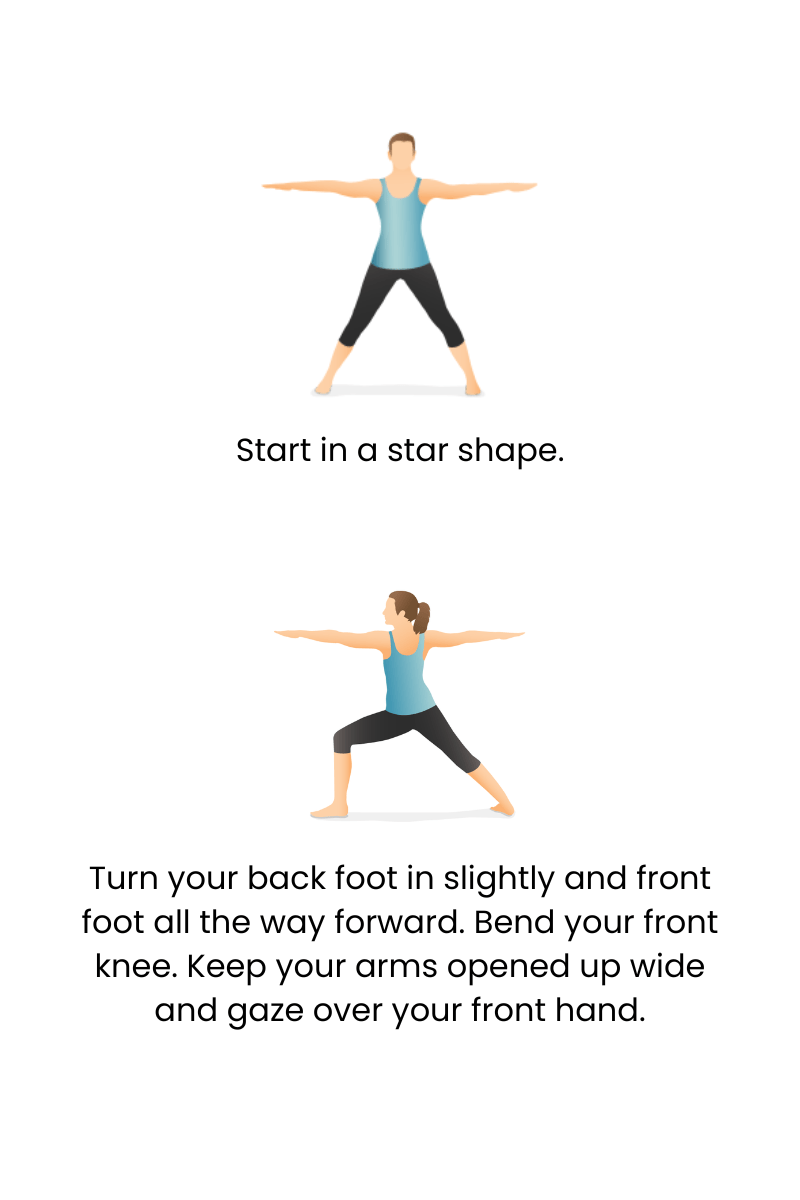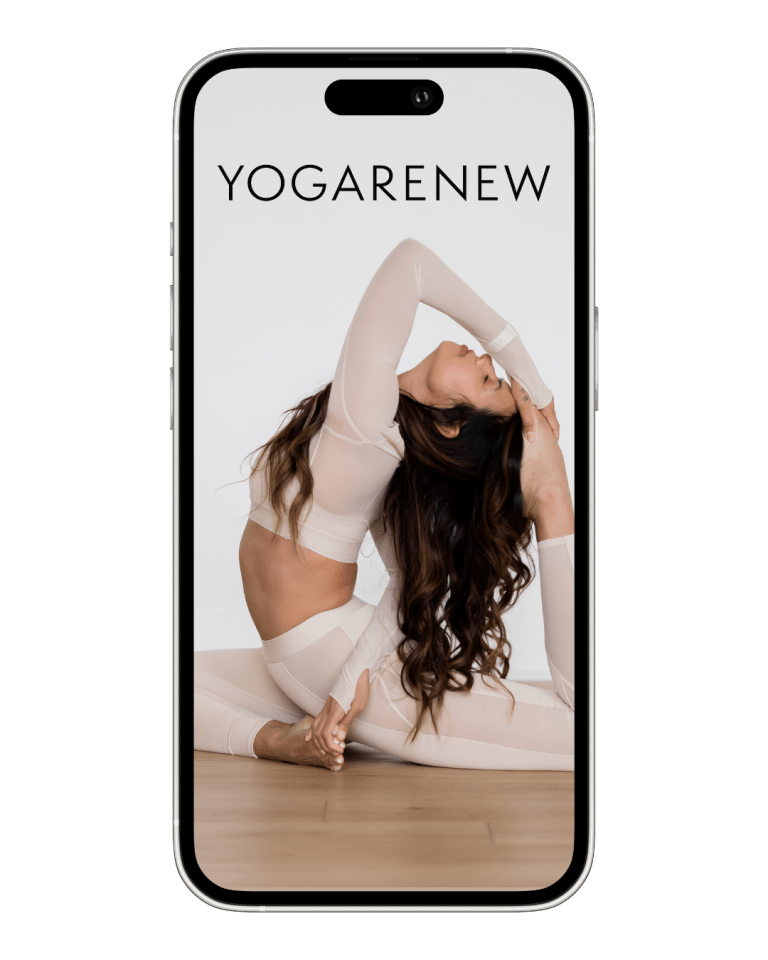What is Warrior Two?
English Name: Warrior II
Sanskrit Name: Virabhadrasana II (pronounced veer-ah-bah-DRAHS-uh-nuh)
Category: Standing, Foundational, Strengthening, Beginner

English Name: Warrior II
Sanskrit Name: Virabhadrasana II (pronounced veer-ah-bah-DRAHS-uh-nuh)
Category: Standing, Foundational, Strengthening, Beginner
Warrior II, or Virabhadrasana II, is a strong, expansive standing pose that builds stamina, stability, and focus. This iconic posture emphasizes grounded strength in the legs and a calm, steady gaze—embodying the spirit of the mythical warrior for which it’s named.
Often used in standing sequences and flow-based classes, Warrior II is a cornerstone of yoga practice. It opens the hips, strengthens the lower body, and sharpens mental clarity. Its accessible form and powerful energy make it a staple in styles ranging from Hatha to Vinyasa to Iyengar.

Stack your front knee directly over the ankle and avoid letting it cave inward
Press firmly into the outer edge of the back foot
Keep both arms actively reaching in opposite directions
Engage the core and keep the ribs from flaring
Level the pelvis and avoid leaning forward or back
“Press through your feet like you’re tearing the mat in two.”
“Reach long through both arms, but stay grounded in your center.”
“Bend the front knee deeply like a warrior ready to move.”
“Keep your gaze steady, like you’re aiming at a target.”
“Feel your back leg rooting down as your chest lifts up.”
Shorten the Stance: Narrow your base to reduce strain on the hips or knees
Hands on Hips: Keep arms down to focus on lower body alignment
Wall Support: Practice with your back against a wall for alignment feedback
Chair Assist: Place a chair under your front thigh for support
Reverse Warrior (Viparita Virabhadrasana): Tilt back from Warrior II, lifting front arm up and back
Bound Warrior II: Add a bind with the arms behind the back for a deeper shoulder stretch
Dynamic Flow: Move in and out of Warrior II with breath to build heat and awareness
Eagle Arms Warrior II: Wrap the arms in front for shoulder activation
Warrior II strengthens the body and sharpens the mind. Its grounded stance builds confidence and stamina, while the expansive arms and focused gaze create a powerful sense of presence. As both a physical and symbolic posture, Virabhadrasana II reminds us to stand tall, stay rooted, and face life with resilience and clarity.
Yes! It’s accessible for most levels and easy to modify as needed.
You’ll feel the legs, hips, and arms engage, with a stretch across the groin and shoulders.
Start with 3–5 breaths and build up to 10 or more as strength and stamina improve.

Explore classes & pose tutorials for any style, format, duration or experience level with a free account in the YogaRenew app. Or subscribe and gain access to workshops, live classes and more.